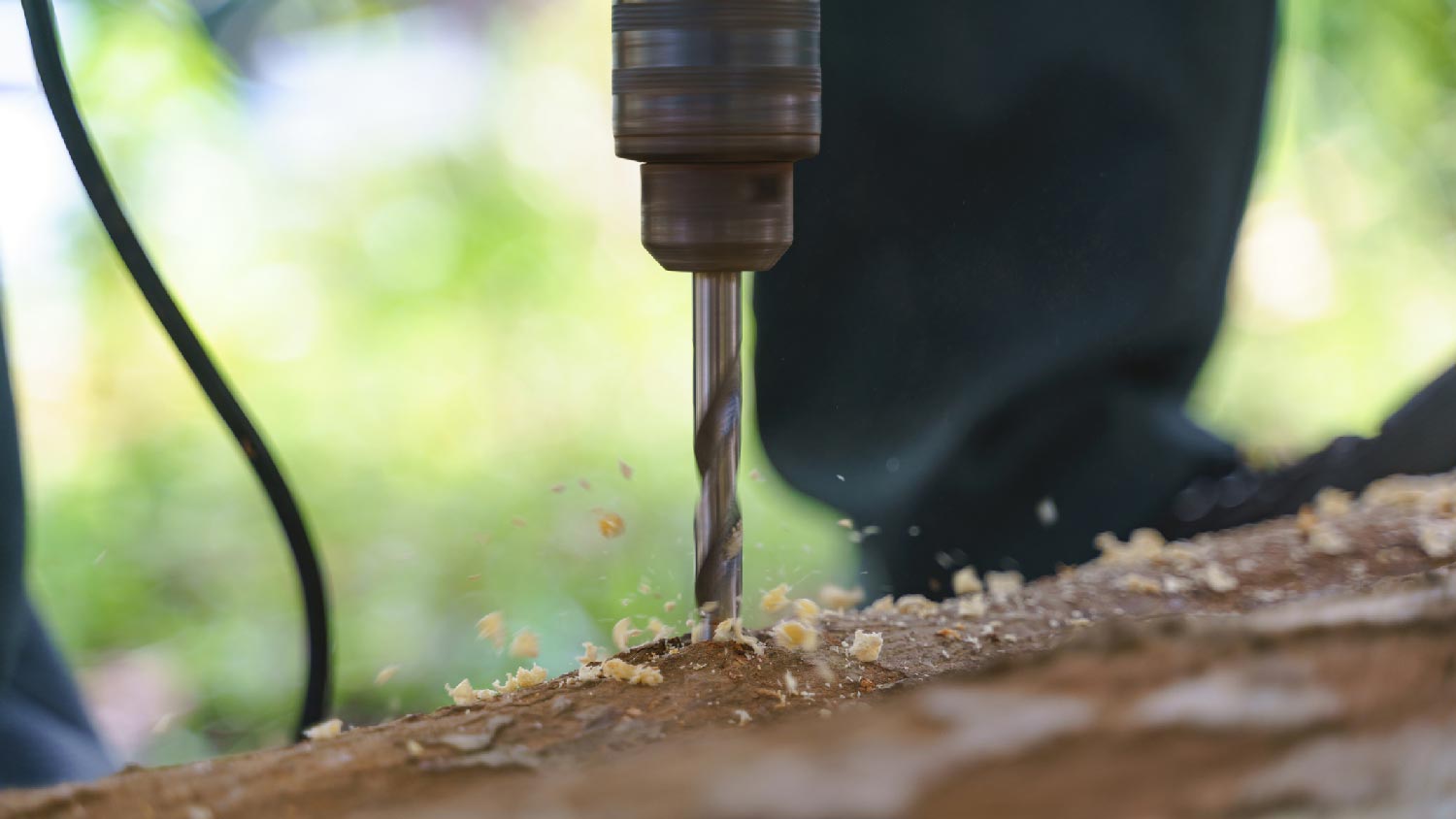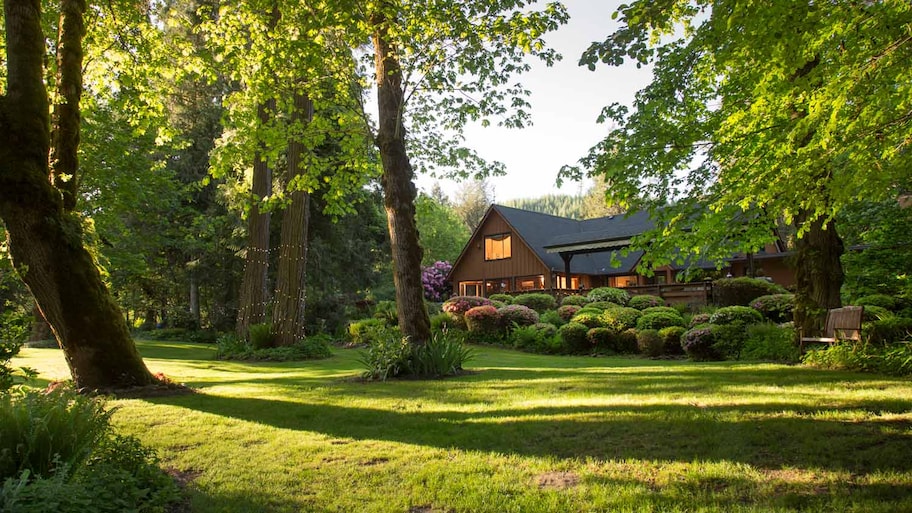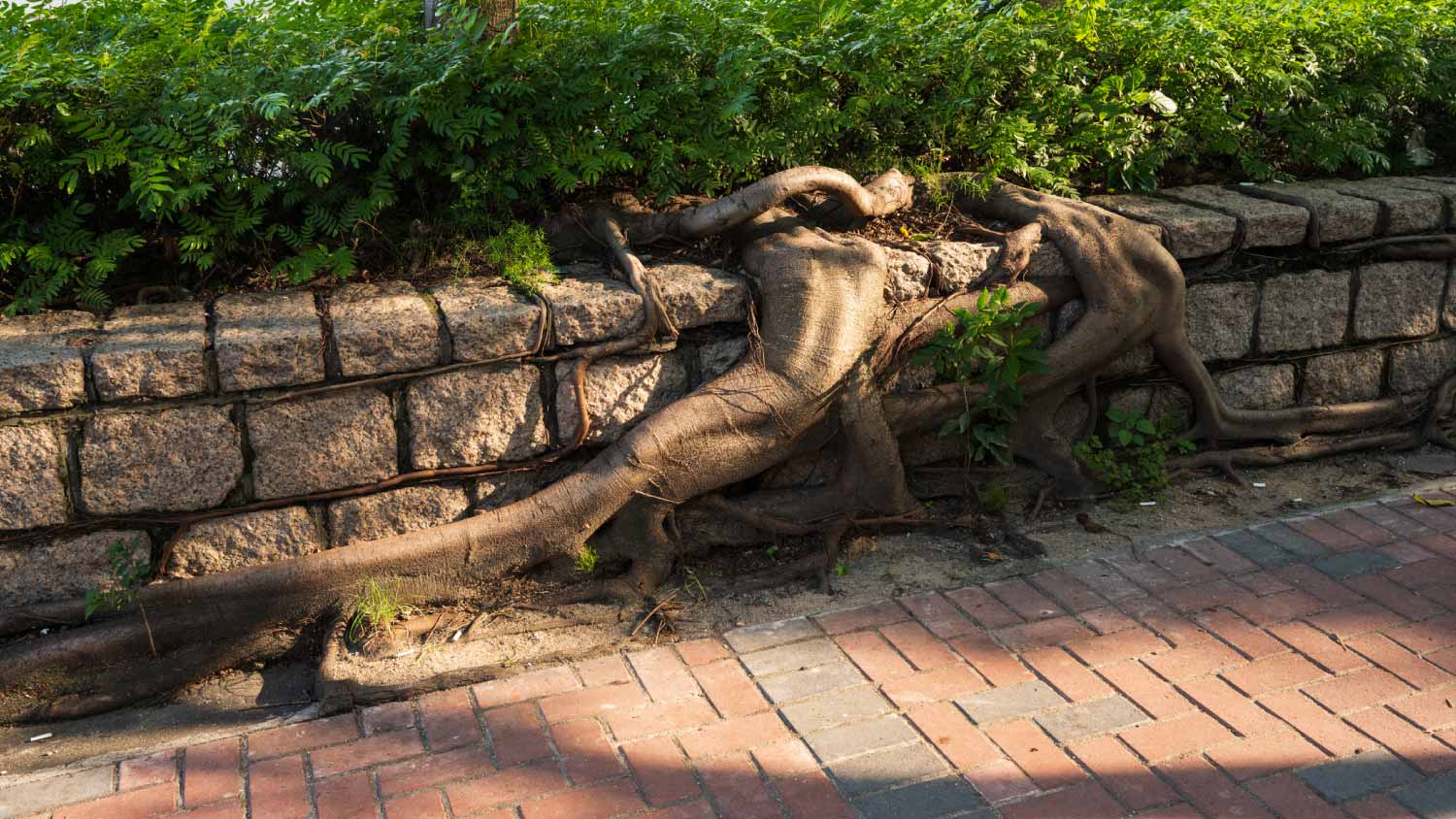How to Burn a Stump: 8 Steps for DIY Stump Removal
Bid that stump bon voyage with a bonfire


Sadly, the triumphant “Timber!” of an unwanted tree falling doesn’t always signal the end of wood-related woes—the tree may be gone, but the unsightly stump remains. And, whether you cut down your own tree or had the pros leave the stump behind, there’s still the matter of getting rid of it before you can reclaim the space in your yard.
While it’s not always a safe or viable solution, learning how to burn a stump is one option to consider for stump removal. Here’s what to know about burning a stump to tackle the project successfully.
This task has serious personal and home safety risks. You should strongly consider hiring a stump grinding professional to ensure it's completed safely and effectively.
How to Burn a Stump
Follow these steps to remove a stump efficiently and effectively.
1. Identify Whether it’s Safe to Burn the Stump
Identifying a stump suitable for burning involves examining its size, composition, and surrounding area. Don’t attempt to burn a stump that’s more than four feet in diameter.
The stump should be completely dry (ideally at least one year after being cut). If the stump is even slightly damp, you risk the fire getting out of control and spreading dangerously across your yard.
No underground utilities or flammable structures nearby that could be affected by the burning process.
Before you kill a tree stump, confirm the local laws for burning stumps in your area. In many areas of the United States, burning stumps and other organic materials is illegal, so it’s essential to confirm that you can legally do it in order to avoid fines and other legal complications.
Once you’ve determined that you can legally burn the stump, clear the area of all debris and potentially flammable materials, including leaves, branches, birdhouses, and more. The burning process can take anywhere from 12 to 24 hours or more, so start as early as possible.
2. Prep and Protect Yourself
You should prep by bringing a hose connected to a water source to the stump in case of emergency. Be sure to wear fire protection gloves, eyewear, and a face mask when working through the stump-burning process. Lastly, since you should never leave a burning stump unattended, prepare to have at least one adult monitoring its progress for the duration of the project.
3. Dig Around the Stump
First, grab a shovel and dig around the perimeter of the stump, uncovering as much of it as possible. Ideally, you want to reach all the way down to the roots.
4. Drill Holes in Top of the Stump

Using a power drill equipped with a one-inch spade bit or similar wood-boring bit, drill a hole at roughly a 30-degree angle in the center of the stump from the top, aiming for a depth of 10 inches. If your stump is shorter, drill down until you reach the roots or a minimum depth of roughly three inches.
Continue the drilling process by creating additional holes of the same size across the stump's top, maintaining a spacing of about one to three inches. Remove the debris from each hole after drilling.
5. Add Fuel to the Stump
Next, fill each hole with either kerosene or potassium nitrate. If using the latter, pour hot water into the holes to dissolve the potassium nitrate.
6. Surround the Stump With Charcoal and Wood Pieces
Before lighting the fire, surround the stump with charcoal. Then, put scrap wood pieces on top of the charcoal, creating a tent-like structure around the stump.
7. Light the Scrap Wood to Ignite the Stump
Now, use kindling to light the scrap wood from the bottom—do not add any additional fuel. Opt for any dry, easily combustible material for kindling, such as cardboard, dry leaves, or dryer lint. Once it’s lit, wait for the stump to catch fire. This step can take up to an hour, so be patient and keep a close eye on it.
8. Monitor the Stump Until It Burns to Ash
Continuously add wood to sustain the fire as necessary. Keep the fire active and closely monitor the stump until it is reduced completely to ash, ensuring that the fire remains controlled and doesn't pose a threat to the surrounding area.
9. Dispose of the Remaining Ashes

Once the fire has stopped smoldering, use a shovel to extract any remaining roots and break down any sizable root or stump fragments still in the hole. If the roots prove challenging to remove, consider using an ax to chop them. Transfer all burned remnants to a fireproof container or bucket.
10. Fill the Area With Fresh Soil
Finish by filling the hollow spot left by the burnt-out stump with fresh soil after removing all of the debris. You can now use it for a DIY grass seed planting project or turn the bare spot into a new flower garden. Building your own fire pit is another excellent way to quickly and efficiently transform the space into something useful.
Safety Tips for Stump Burning
Safety is of the utmost importance when it comes to burning a stump. Follow these guidelines when preparing for and carrying out this project.
Wear safety goggles and protective gloves to prevent injury.
Wet the surrounding area to help keep the burn under control.
Always use caution when handling ashes, as lingering embers can cause burns.
Visually monitor the fire at all times from a safe distance.
Be ready with a water hose or a fire extinguisher to control any unexpected flare-ups.
DIY vs. Hire a Pro
While learning how to burn a stump is the most cost-effective solution to stump removal, it’s not always the safest. The process also requires ample time and patience, as the stump must always be monitored. All in all, it can feel intimidating or downright impossible, especially if the stump is too damp to stay lit.
Hiring a local stump removal professional may come with an extra investment, but it’s the safest and most efficient way to remove a stump. The cost of professional stump grinding is typically around $320 and worth the extra cost, especially if safety concerns are involved. Costs vary based on factors such as your location and the size of the stump, so don’t hesitate to reach out to a pro for an estimate.
Frequently Asked Questions
Burning a tree stump can be effective, but it comes with safety considerations and isn’t always best for every situation. It's essential to check local regulations and assess the safety risks involved. Stumps that are near wooden structures or other non-moveable flammable objects aren’t good candidates for burning due to the risk of the fire spreading. Alternatives like grinding or a DIY stump rotting project might be safer and quicker for getting the job done.
Stumps are difficult to burn due to their dense wood and high moisture content. The dense wood and moisture slow down the burning process, requiring sustained high temperatures over an extended period. Since the wood is damp, this hinders the heat generation needed to keep the fire burning, causing it to frequently go out.
Using highly flammable fuels like gasoline to burn a stump carries significant safety risks and should be avoided. Gasoline is highly flammable and volatile, potentially leading to uncontrollable fires, explosions, and other environmental hazards. Additionally, the risk of the fire spreading to surrounding areas is much higher with gasoline use. Safer alternatives, such as specialized stump removal chemicals or professional grinding services, are the best options for stump removal.





- 7 Ways to Remove a Tree Stump
- What Is Stump Grinding? Here’s Everything You Need to Know
- Is Stump Grinding Necessary? Pros and Cons of Stump Grinding
- How to Remove a Palm Tree Stump: A DIY Guide
- How to Stop a Tree Stump From Growing: 4 Different Methods
- How to Kill Tree Roots: 6 Ways to Remove Roots Safely
- 11 Handy Tips and Tricks to Help With Your Next Home Project
- What to Do After a House Fire: 8 Steps for Home Fire Recovery
- Best and Worst Woods for Fireplaces
- 10 Most Common Plumbing Problems Every Homeowner Should Know










